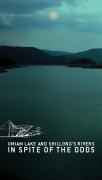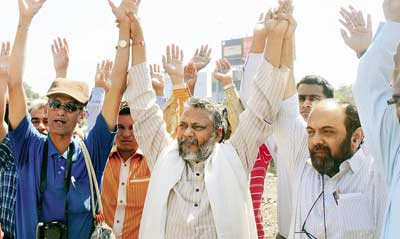Biological Pollution
Indian standard code of practice for installation of septic tanks (IS: 2470) - Bureau of Indian Standards (1986)
Posted on 11 Apr, 2011 03:46 AMThis IS Code provides various requirements that have to be met while constructing a septic tank, so that it meets minimum standards. This Code is dictated by the Bureau of Indian Standards, and ensures that the sewage is treated in a way that maintains health and hygiene of the community.
While the first standard for small septic tanks was first printed in 1963 and then revised in 1968, the standard for disposal of effluent from septic tanks was published later in 1964 and revised in 1971.
This code has been sourced through City Managers' Association Karnataka (CMAK), a non profit that provides technical expertise to urban local bodies.
Water pollution in villages - A post in Hindi by Ram Naresh Kumar and Sanjay Singh
Posted on 05 Apr, 2011 02:49 PMगांवों में जल प्रदुषण
Campaign against pollution of the Aril river in Moradabad district, U.P
Posted on 18 Jan, 2011 11:45 PMThis pollution has been caused by a paper factory that was set up 16 years ago. The noise, air, land and water pollution that are a direct result of the factory have changed a beautiful and peaceful rural area into one where farmers’ land and crops have been destroyed, the air is full of fine, crystalline ash, the local river is an evil-smelling, stagnant mire of foam-encrusted sludge and the water table has fallen by over 70 feet.
Managing Natural Resources -A report by IDSAsr
Posted on 18 Jan, 2011 04:24 PMThe scarcity value of natural resources has risen due to rising pressure of human population and demands made by modern economics progress. As such managing these resources has become very important.
Guidelines for water safety plans for rural water supply systems by the Sulabh International Academy of Environmental Sanitation
Posted on 27 Dec, 2010 07:20 PMThis document by the Sulabh International Academy of Environmental Sanitation presents the guidelines for water safety plans for rural water supply systems. The revised National Rural Drinking Water Programme (NRDWP) Guidelines 2009-2012 issued by Rajiv Gandhi National Drinking Water Mission, Department of Drinking Water and Sanitation has shifted the focus from source development and installation of water supply system for providing drinking water supply to rural household to focus on development of village security plan.
Umiam Lake and Shillong's Rivers: In spite of the odds – An advocacy flyer by Arghyam and Peoples Learning Centre
Posted on 22 Dec, 2010 11:01 PM This advocacy flyer by Arghyam and Peoples Learning Centre (PLC) Shillong highlights some of the main problems, action underway and potential solutions to cleaning up the water bodies of Shillong. It deals with the expanding human habitats and escalating socio-economic activities around the rivers Umkrah and Umshyrpi that flow through Shillong leading to their choking with sewage and pollution. This wastewater eventually enters Lake Umiam, which is a reservoir for hydro-electric power.
This advocacy flyer by Arghyam and Peoples Learning Centre (PLC) Shillong highlights some of the main problems, action underway and potential solutions to cleaning up the water bodies of Shillong. It deals with the expanding human habitats and escalating socio-economic activities around the rivers Umkrah and Umshyrpi that flow through Shillong leading to their choking with sewage and pollution. This wastewater eventually enters Lake Umiam, which is a reservoir for hydro-electric power.
PLC is a non-profit organisation that works towards promoting knowledge on equity and rights, and is a platform for facilitating interdisciplinary dialogues between stakeholders in key developmental issues. Arghyam supports PLC in engaging with decision makes as well as citizens in order to create public opinion about river and lake pollution, and promote catchment friendly practices.
Mining - An increasing threat to our rivers - Article by Nitya Jacob
Posted on 20 Dec, 2010 12:29 AMContent Courtesy: Solution Exchange and Nitya Jacob
Author: Nitya Jacob
India’s arteries are choking. Her rivers, the lifeline of hundreds of millions, are over-taxed, polluted and encroached. They are being mined, dammed and emptied of water. Save for the four monsoon months, most rivers are streams of drains, depending on how many cities they pass through. This year people gaped in awe at the River Yamuna (I am sure they were over-awed by other rivers elsewhere too) as for the first time since 1978 looked like a river and not a drain.
"Gujarat farmers fight against climate change: Adopt technoloxxgy to conserve resources and maximize benefits" : News roundup (15-21 October 2010)
Posted on 22 Oct, 2010 11:25 AMClimate Change






